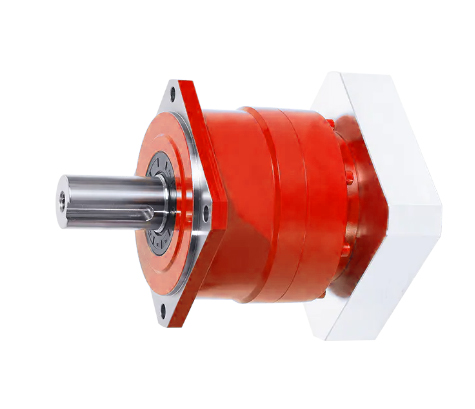How to Adjust the Accuracy of a Planetary Gear Reducer
When using a planetary gear reducer, one may encounter issues related to friction. Friction leads to changes in the size, shape, and surface quality of related components, resulting in wear and an increase in the clearance between components. If the clearance exceeds reasonable limits, adjusting the clearance becomes necessary to ensure the accuracy of relative motion between components. So, how can the accuracy of a planetary gear reducer be adjusted?
1. Adjusting the Guide Rail Accuracy
Guide rail accuracy refers to how precisely the moving components of machinery follow the intended path along the guide rails. The factors that influence guide rail accuracy include both the type, configuration, and dimensions of the guide rail chosen during design, as well as factors encountered during equipment maintenance. Some key factors affecting guide rail accuracy are:
- (1) The appropriateness of the guide rail clearance: If the clearance between the guide rail and the moving parts is too large or too small, it can affect the smooth movement and accuracy of the equipment.
- (2) The stiffness of the guide rail: Insufficient stiffness in the guide rail can lead to flexing under load, which can compromise the precision of movement.
- (3) The geometric accuracy of the guide rail: The surface quality and alignment of the guide rail are crucial for ensuring the correct movement path.
2. Adjusting the Clearance between the Worm Gear and Nut in a Worm Screw Jack
In general mechanical devices, the transmission chain consists of various gear pairs, including gears with gears, gears with racks, worm gears with worm shafts, and screw threads with nuts. The screw jack mechanism is commonly used to achieve linear motion. The clearance between the lead screw and the nut is difficult to eliminate entirely, and with usage, wear tends to increase the clearance, affecting the proper functioning of the equipment. Therefore, eliminating the clearance between the lead screw and the nut is crucial during equipment maintenance.
The adjustment process typically involves:
- Checking for excessive wear and adjusting the fit between the nut and the screw.
- Replacing worn-out components if necessary to restore tightness.
- Ensuring that the screw and nut maintain a smooth, backlash-free engagement during operation.
3. Adjusting the Spindle Rotational Accuracy of the Planetary Gear Reducer
Spindle rotational accuracy refers to the radial runout, end-face runout, and axial displacement of the spindle’s working parts. In the case of a planetary gear reducer, the accuracy of the main spindle is often determined by the bearing used, provided the spindle itself is manufactured with acceptable tolerances. The key to adjusting the spindle’s rotational accuracy lies in regulating the bearing clearance.
Proper bearing clearance is essential for the spindle’s performance and bearing lifespan. If the clearance is too large, it can lead to uneven load distribution on the rolling elements of the bearing, causing localized stress that shortens bearing life. Additionally, improper clearance can lead to spindle drift, which may result in vibration or instability in the system.
To adjust the spindle rotational accuracy:
- Adjust bearing clearance: For rolling bearings, it is necessary to maintain a reasonable bearing clearance. Too much clearance can lead to undesirable effects, such as increased radial and axial movements, while too little can increase friction and cause overheating.
- Preload bearings: In some cases, a preload is applied to the bearing, creating a slight interference fit between the rolling elements and the raceways. This preload improves bearing rigidity, reduces backlash, and increases system stiffness, enhancing the overall accuracy of the system.
- Monitor for vibration: After adjustments are made, the system should be monitored for any signs of vibration, which may indicate improper bearing adjustment or other alignment issues.
Conclusion
The accuracy of a planetary gear reducer is influenced by several factors, including guide rail precision, the clearance between the lead screw and the nut, and the rotational accuracy of the spindle. Regular maintenance and careful adjustments of these components—such as guide rail clearance, bearing clearance, and the fit between the nut and screw—are essential for maintaining optimal performance and extending the life of the equipment. By properly managing these factors, you can ensure that the planetary gear reducer continues to operate with high precision and reliability.

